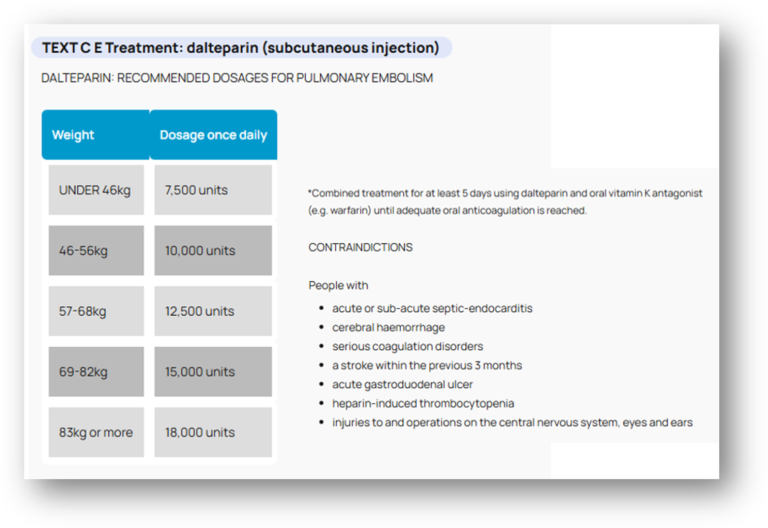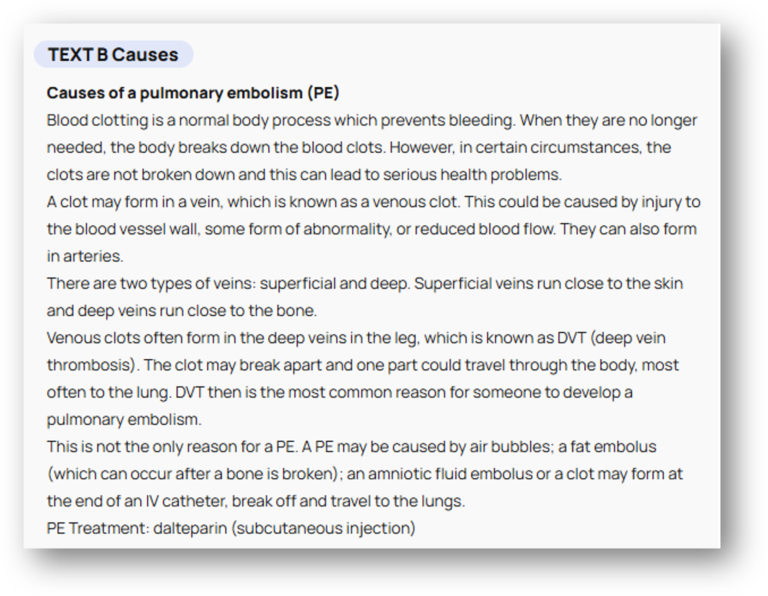
Black Friday Mega Sale at Specialist Language Courses!
We are excited to announce our Black Friday Mega Sale, designed to help healthcare professionals prepare for their exams with high-quality, flexible online learning at

Are you preparing for the OET Reading test and wondering how to tackle Part A effectively? In this guide, we’ll walk you through the essential skills of skimming and scanning, helping you navigate the reading texts with confidence. We’ll also go through some sample questions using a real exam-style text on pulmonary embolism. Follow along and put your skills to the test!
OET Reading Part A is a fast-paced section where you need to locate key information quickly. You’ll be given four short texts related to a healthcare topic and 15 questions to answer in just 15 minutes. This means efficient reading strategies are crucial!
Before answering the questions, your first task is to skim-read the texts to get a general understanding of their content. Let’s look at an example based on pulmonary embolism.
💡 Tip: Spend only two minutes skimming the texts so you have enough time for the questions!
In this section, you’ll match the information in the question to the correct text. Because you have already skimmed the texts, you should be able to match information quickly.
For example:
Question 1: “Why a blood clot forms” → Text B (Causes of Pulmonary Embolism)
Question 2: “The dose required for a specific body weight” → Text C (Dalteparin dosage table)
Question 3: “What to do if a pulmonary embolism is suspected” → Text A (Diagnosis and scoring system)

In this section, you must complete sentences using words or phrases from the text. Let’s try an example:
Question 8: “A person weighing 72 kilograms should receive ______ units of Dalteparin
🔍 Strategy: The keywords here are “72 kilograms” and “Dalteparin”, so we look at Text C, find the correct weight range, and locate the corresponding dosage.
Here’s another example:
Question 9: “Dalteparin is not recommended for someone who has had surgery on their ______.”
🔍 Strategy: The keywords here are “not recommended”, “surgery”, and “eyes”. Looking at Text C, we find:

For these, you must locate key details in the text and provide a brief answer.
Question 15: “In normal circumstances, what do blood clots stop from happening?”
🔍 Strategy: The keywords are “blood clots” and “stop”. Looking in Text B, we find:
💡 Tip: Look for synonyms in the text—”prevents” is a synonym for “stops.”
Mastering OET Reading Part A requires strategy and practice. Use the skimming and scanning techniques we discussed to quickly locate key details and boost your speed.
📌 Want to take your OET Reading skills to the next level? Watch our full video breakdown of this exercise and see these strategies in action!
📌 Download your FREE OET Reading Sample Questions to test your skills and apply what you’ve learned.
Happy studying, and best of luck with your OET preparation! 🚀
Specialist Language Courses (SLC) are dedicated to helping healthcare professionals excel in the OET. Our expert-led courses focus on the specific language skills and test strategies needed to succeed. With personalised coaching, practice tests, and targeted exercises, we ensure you build the confidence and competence required for each OET sub-test. Join SLC to boost your chances of achieving the scores you need and advancing your healthcare career

We are excited to announce our Black Friday Mega Sale, designed to help healthcare professionals prepare for their exams with high-quality, flexible online learning at

We’re delighted to announce a new partnership between Specialist Language Courses (SLC) and the University of Sharjah’s Clinical & Surgical Training Center (CSTC) — one

Back to Menu ↩ Specialist Language Courses (SLC) is proud to announce a new partnership with the University of Sharjah’s Clinical & Surgical Training Center
Get updates and get the latest materials on Medical English, OET and IELTS
Save 30% on all 1-month and 3-month subscription courses!
